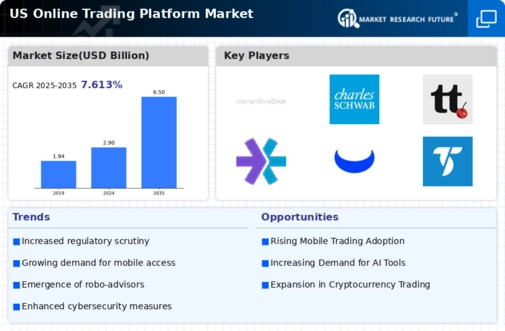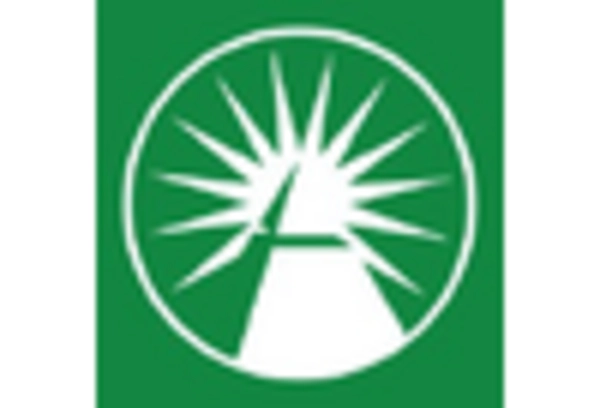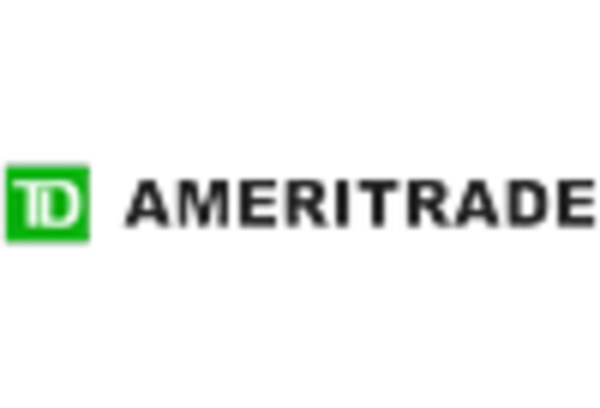Regulatory Changes and Compliance
The online trading-platform market is significantly influenced by regulatory changes and compliance requirements. In the US, regulatory bodies such as the SEC and FINRA are continuously updating their guidelines to ensure market integrity and protect investors. These regulations can impact how trading platforms operate, potentially leading to increased operational costs. However, compliance can also enhance user trust, which is crucial for platform growth. For instance, platforms that adhere to stringent regulations may see a 20% increase in user engagement. As the regulatory landscape evolves, platforms that adapt swiftly are likely to thrive in the competitive online trading-platform market.
Growing Popularity of Retail Trading
The online trading-platform market is witnessing a notable increase in retail trading activity. More individuals are engaging in trading due to the accessibility of platforms and the proliferation of educational resources. Data indicates that retail trading volumes have surged by approximately 40% in the past year, driven by younger demographics seeking investment opportunities. This trend is further supported by the rise of social trading, where users can follow and replicate the trades of experienced investors. As retail participation grows, the online trading-platform market is likely to expand, attracting new entrants and fostering competition among existing platforms.
Enhanced User Experience and Interface Design
The online trading-platform market is placing a strong emphasis on enhancing user experience and interface design. As competition intensifies, platforms are investing in user-friendly interfaces that simplify the trading process. Features such as customizable dashboards, intuitive navigation, and responsive customer support are becoming essential. Research indicates that platforms with superior user experience can see user retention rates increase by up to 25%. This focus on design not only attracts new users but also fosters loyalty among existing clients. As the online trading-platform market evolves, prioritizing user experience will likely be a key differentiator for success.
Increased Demand for Diverse Investment Options
The online trading-platform market is responding to a growing demand for diverse investment options. Investors are increasingly seeking platforms that offer a wide range of assets, including stocks, ETFs, cryptocurrencies, and commodities. This trend is indicative of a shift in investor preferences, as individuals look to diversify their portfolios to mitigate risks. Recent surveys suggest that 65% of investors prefer platforms that provide access to multiple asset classes. Consequently, platforms that adapt to these preferences are likely to gain a competitive edge in the online trading-platform market, attracting a broader user base.
Technological Advancements in Trading Platforms
The online trading-platform market is experiencing a surge in technological advancements, which are reshaping the trading landscape. Innovations such as artificial intelligence and machine learning are being integrated into trading platforms, enhancing decision-making processes. These technologies enable traders to analyze vast amounts of data quickly, potentially increasing trading efficiency. According to recent data, the adoption of AI in trading could lead to a 30% increase in trading volume over the next few years. Furthermore, the rise of blockchain technology is also influencing the market, providing enhanced security and transparency. As these technologies evolve, they are likely to attract a broader range of investors, thereby expanding the online trading-platform market.

















Leave a Comment